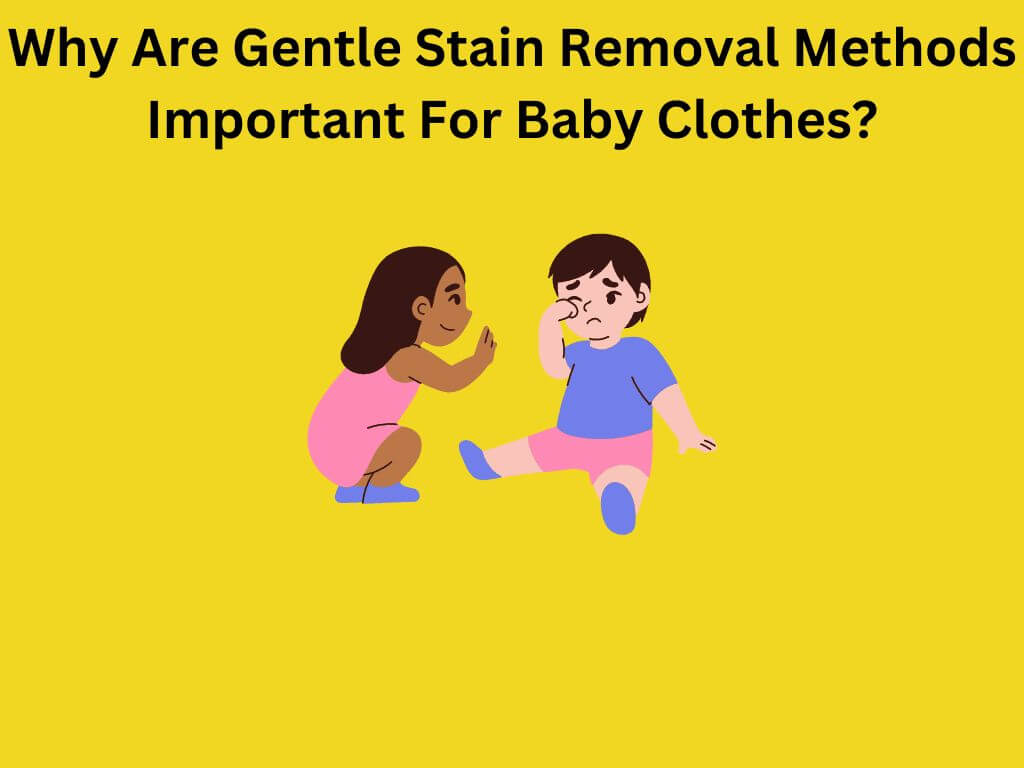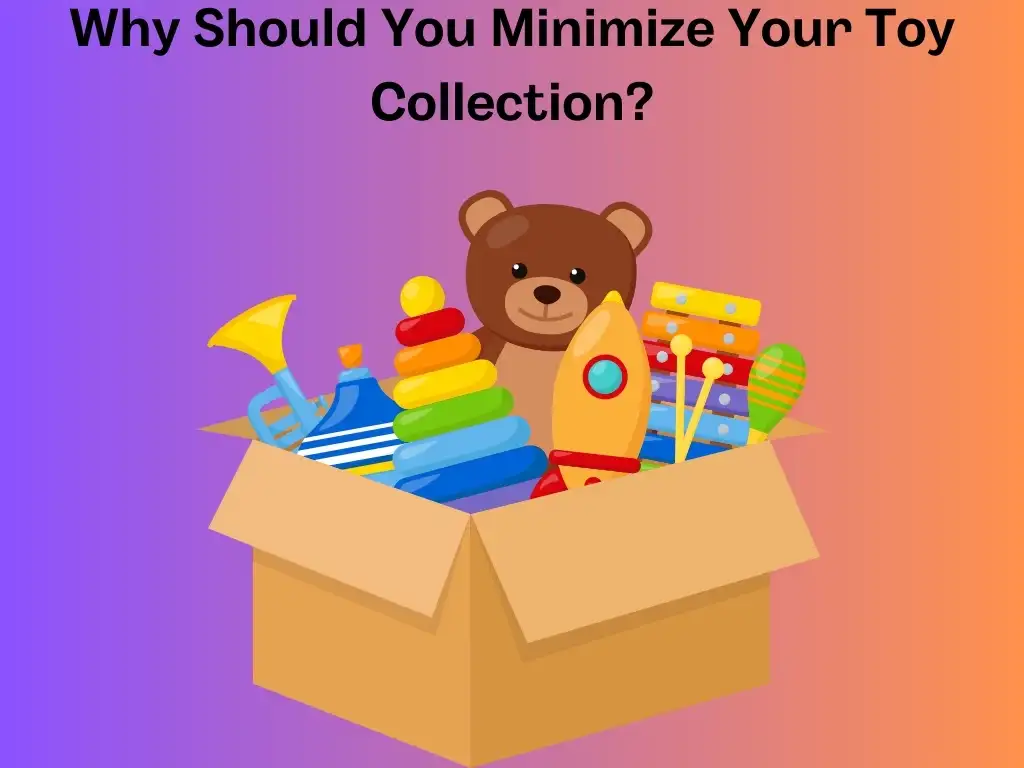Stains on your baby’s clothes can be frustrating and persistent. Did you know that a baby’s skin is much more sensitive than ours? This article will guide you through safe and gentle ways to remove those tough stains without risking irritation or damage.
Keep reading for some peace-of-mind laundry tips!
Key Takeaways
- Gentle stain removal keeps baby clothes soft and protects a baby’s skin from irritation.
- Natural methods and mild detergents are better for removing stains from baby clothes without harsh chemicals.
- Treating stains quickly with cold water or gentle pre-wash treatments helps maintain the quality of baby clothes.
The Importance of Gentle Stain Removal for Baby Clothes
Gentle stain removal for baby clothes is important because it helps to protect delicate skin, maintain the quality of the clothes, and reduce exposure to harsh chemicals. It’s essential to use safe and natural methods when treating stains on baby clothing.
Protecting delicate skin
Baby skin is very soft and can get upset by strong cleaners. When washing baby clothes, it’s best to use safe stain removers that won’t hurt your little one. Soft fabrics need to stay kind against a baby’s skin without causing rashes or allergies.
That means picking products without harsh stuff in them.
Stain removal should be gentle for babies’ clothes because their coverings are often close to the skin all day and night. This helps make sure nothing left on the fabric will bug the child’s skin.
Parents feel better knowing they’re using mild detergents and natural ways to clean off stains while caring for their kids’ outfits. Choosing these methods keeps baby comfy and avoids bad reactions from rough chemicals.
Maintaining the quality of clothes
To maintain the quality of baby clothes, it is essential to use gentle stain removal methods. This helps in protecting delicate skin, preserving the fabric, and reducing exposure to harsh chemicals.
By using gentle stain removal products, you can ensure that the baby’s clothes remain safe and free from potentially harmful residues while maintaining their softness and comfort for the baby to wear.
Moreover, choosing gentle stain removal methods also helps in preventing damage to delicate fabrics and ensures that the clothes can be reused for future siblings or other babies. It reduces the risk of allergic reactions or skin sensitivities caused by harsh chemicals found in some stain removers.
Reducing exposure to harsh chemicals
By using gentle stain removal methods, you can reduce the risk of exposing your baby’s delicate skin to harsh chemicals commonly found in strong stain removers. This helps prevent potential skin irritations, allergies, and discomfort that could result from contact with these chemicals.
Additionally, choosing gentler options ensures that any residues left on the clothes are safer for your baby’s skin, giving you peace of mind while caring for your little one’s clothing.
Common Stains on Baby Clothes
Spit-up, breast milk/formula, diaper stains, early solid foods, and teething drool are some of the common stains you’ll encounter on your baby’s clothes. Knowing how to gently remove these stains is essential for keeping their delicate clothing in good condition.
Spit-up
When dealing with spit-up stains on your baby’s clothes, it’s important to act quickly. Rinse or blot the stain immediately to prevent it from setting into the fabric. Using a gentle pre-wash treatment or mild detergent can effectively remove the stain without irritating your baby’s sensitive skin.
Always wash in warm or cool water and avoid using fabric softeners, as they may leave behind residue that could cause discomfort. By following these tips, you can ensure that your baby’s clothes remain clean and free from potentially harmful chemicals, providing a safe and comfortable environment for your little one.
Breast milk/formula
When dealing with breast milk or formula stains on baby clothes, it’s essential to act quickly. Rinse the stained area with cold water to prevent the stain from setting. Then gently dab the stain with a mild detergent or baby laundry soap, allowing it to sit for a few minutes before washing.
Avoid using hot water as it can set the stain further into the fabric. After washing, ensure that there are no residues left behind by running an extra rinse cycle which will be safe for your infant’s delicate skin.
These gentle stain removal methods help protect your baby’s skin from harsh chemicals while ensuring that their clothes remain clean and safe for them to wear. By choosing natural and gentle options, you can effectively remove breast milk or formula stains without compromising the quality of your baby’s clothing or exposing them to unnecessary irritants.
Diaper stains
To effectively remove diaper stains from baby clothes, start by rinsing the stained area with cold water and gently rubbing with a mild detergent. Avoid scrubbing vigorously to prevent damaging the fabric.
Then, wash the garment in warm or cool water with a gentle detergent. Consider using natural stain removers like lemon juice or baking soda for stubborn stains, as they are safe for delicate baby skin.
By choosing gentle stain removal methods, you can protect your baby’s sensitive skin and ensure that their clothes stay soft and comfortable.
After removing diaper stains from baby clothes, allow them to air dry to maintain their quality. Additionally, consider pre-treating tough stains before washing to ensure effective removal without causing damage.
Early solid foods
When introducing solid foods to your baby, it’s common for their clothes to encounter new and challenging stains. As they explore different flavors and textures, food spills and dribbles can leave stubborn marks on their outfits.
Whether it’s mashed fruits or colorful veggies, these stains can be tough to remove. Using gentle stain removal methods is crucial to ensure that your baby’s clothes remain clean without damaging the delicate fabric.
By promptly treating and washing stained garments with mild detergents like Dropps Stain and Odor Laundry Detergent Pods (affiliate link from Amazon) and natural pre-wash treatments, you can effectively eliminate these stains while keeping the clothing safe for your baby’s sensitive skin.
Teething drool
Teething drool can leave stubborn stains on your baby’s clothes. This occurrence is quite common as babies start teething around six months old. The drool may contain enzymes that can cause discoloration and damage to the fabric.
It’s important to address these stains promptly using gentle methods to avoid skin irritation for your baby. By rinsing or blotting the affected area immediately and choosing mild detergents, you can effectively remove teething drool stains while keeping your baby’s clothes soft and safe for their delicate skin.
Tips for Removing Stains from Baby Clothes
For tough stains, consider using a mild pre-wash treatment or gentle detergent before washing in warm water. Avoid fabric softeners and instead, hang or lay the clothes flat to dry for best results.
Rinse or blot stains immediately
When your baby’s clothes get stained, act promptly. Here are some important steps to follow:
- Rinse the stained area with cold water as soon as possible to prevent the stain from setting.
- Gently blot the stain with a clean cloth or paper towel to absorb excess liquid and prevent it from spreading.
- Avoid rubbing the stain vigorously, as this can cause it to set deeper into the fabric.
- If the stain is a tough one, consider pre – treating it with a gentle stain remover before washing.
- Remember that prompt action can help prevent stubborn stains and maintain the quality of your baby’s clothing.
Use gentle pre-wash treatments
Gentle pre-wash treatments are important for removing stains from baby clothes. Here are the steps to follow:
- Start by rinsing or blotting the stain immediately with cold water to prevent it from setting. Avoid hot water as it can set protein-based stains like milk or baby food.
- Mix a gentle pre – treatment solution using mild dish soap, white vinegar, and water, then apply it directly to the stained area. Gently rub the solution into the fabric using your fingers or a soft brush.
- Let the pre – treatment solution sit on the stain for at least 15 minutes to allow it to break down and lift the stain without damaging the fabric.
- After letting it sit, rinse the pre – treated area thoroughly with cold water to remove the solution and loosened stain particles.
- If necessary, repeat these steps until the stain is fully lifted before washing the garment with a mild detergent and cool water.
Choose a mild detergent
Selecting a mild detergent is crucial for keeping your baby’s clothes clean and safe. Look for detergents specifically formulated for sensitive skin, free from harsh chemicals and fragrances.
This helps to prevent skin irritation and allergic reactions on your baby’s delicate skin, ensuring their comfort and well-being. Using a mild detergent also extends the lifespan of the clothes, preserving their softness and quality wash after wash.
When choosing a detergent, opt for gentle formulas that are tough on stains yet gentle on fabrics, providing effective cleaning without compromising on safety or comfort.
Wash in warm or cool water
When washing baby clothes, it’s essential to use warm or cool water. This helps to prevent shrinkage and color fading, preserving the quality of delicate fabrics often found in baby clothing.
Warm or cool water is gentle on both the clothes and your baby’s sensitive skin, reducing the risk of irritation and discomfort caused by harsh temperatures. By using these water temperatures for laundering baby clothes, you can ensure that the clothing remains soft, comfortable, and safe for your little one to wear without exposing them to unnecessary risks from hot water or extreme cold.
By selecting warm or cool water when laundering your infant’s attire, you are effectively safeguarding their delicate skin from potential irritants while also extending the lifespan of their clothing.
Avoid fabric softeners
Fabric softeners may leave a residue on baby clothes that could irritate their sensitive skin. The chemicals in fabric softeners can be harsh and cause allergic reactions, so it’s best to skip them altogether when washing baby clothes.
Opt for natural alternatives like vinegar or wool dryer balls to keep your baby’s clothes soft without the use of harmful chemicals. Using fabric softeners may compromise the gentle care needed for delicate baby clothes and might not be suitable for their sensitive skin, so it’s best to avoid them entirely.
Hang or lay flat to dry
After washing baby clothes, you should hang or lay them flat to dry. This helps maintain the fabric’s softness and prevents shrinking. It also reduces the need for ironing, preserving the delicate material of your baby’s clothing.
Additionally, this gentle drying method ensures that no harsh residues from dryer sheets or fabric softeners come into contact with your baby’s sensitive skin, keeping them safe and comfortable in their clothes.
By hanging or laying flat to dry, you’re ensuring that your baby’s clothes stay in good condition for longer. It’s a simple way to protect both the fabric and your little one’s skin from unnecessary irritation.
Consider dry cleaning for tough stains
For tough stains on baby clothes, consider using dry cleaning as it is a gentle and effective method. Dry cleaning can help remove stubborn stains without causing damage to delicate fabrics.
This process avoids the use of harsh chemicals and high heat, ensuring that the clothes remain safe for your baby’s sensitive skin. Additionally, dry cleaning helps to preserve the quality of the clothing, allowing them to be used again without any leftover residue that could potentially irritate your baby’s skin.
By considering dry cleaning for tough stains on baby clothes, you are choosing a safe and reliable method that aligns with gentle stain removal practices. It’s important to remember that using gentle methods like dry cleaning can help maintain the softness and comfort of your baby’s clothing while effectively removing even the most challenging stains.
Other Ways to Care for Baby Clothes
Pre-treat stains before washing and wash new clothes before dressing the baby to ensure they are clean and safe for delicate skin. Sort clothes by color and material, use a mesh laundry bag, and consider dry cleaning for tough stains.
Pre-treat stains before washing
Before washing your baby’s clothes, pre-treat any stains to ensure they are properly removed. Here are some gentle pre-treatment methods to handle different types of stains:
- For spit – up stains, gently scrape off any solid residue and then soak the area in cold water before washing.
- Breast milk or formula stains can be pre-treated with a mild detergent or enzyme-based stain remover before laundering.
- To tackle diaper stains, rinse the fabric under cold running water first, then pre-treat with a baby-safe stain remover.
- For stubborn solids from early solid foods, use a gentle brush to remove excess residue and then apply a mixture of water and white vinegar to the stained area.
- Teething drool stains can be pre – treated by dabbing the area with a mixture of water and baking soda before washing.
Wash new clothes before dressing baby
Before dressing your baby in new clothes, it is important to wash them first. This helps remove any residue from the manufacturing process that might irritate your baby’s delicate skin.
Washing the clothes also eliminates any potential allergens or dust that may have accumulated while the items were on store shelves. By washing new clothes before dressing your baby, you can ensure that their clothing is clean and safe for their sensitive skin.
After purchasing new baby clothes, remember to always wash them before your little one wears them for the first time. This simple step helps protect your baby’s delicate skin from any chemicals or dirt that may be present on unwashed garments.
Sort clothes by color and material
When washing your baby’s clothes, sorting them by color and material is essential. Ensure to separate whites, lights, and darks to prevent color bleeding that can ruin the clothes. Sorting by material helps prevent damage to delicate fabrics like cotton and wool.
- Separate whites from colors and darks to avoid color bleeding during washing.
- Sort clothes made of delicate materials such as cotton or wool into their own separate loads.
- Check the care labels on each garment for specific washing instructions based on color and material.
- Washing similar fabrics together can help prevent damage caused by rubbing against rougher materials.
- Sorting clothes before washing ensures that each load receives the appropriate care for its specific needs.
Use a mesh laundry bag
When washing baby clothes, consider using a mesh laundry bag. This will help to protect delicate fabrics and prevent them from getting damaged in the washer. The mesh bag also prevents small items from getting lost or tangled, ensuring that all the baby clothes come out clean and undamaged after each wash.
Additionally, placing baby clothes in a mesh laundry bag can help to keep them separated from adult clothing and other items in the wash, reducing the risk of cross-contamination with stains or residues.
Using a mesh laundry bag is an easy way to maintain the quality of baby clothes while ensuring effective stain removal without causing any damage or wear on the delicate fabrics.
Conclusion
In conclusion, it’s crucial to use gentle stain removal methods for baby clothes. Removing stains naturally helps protect delicate skin and maintain clothing quality. By avoiding harsh chemicals, you reduce the risk of skin irritation.
These methods also ensure that baby clothes remain safe and free from potentially harmful residues. Overall, using gentle stain removal methods is essential for keeping your baby comfortable and healthy in their adorable outfits.
FAQs
1. Why should I use gentle methods to take stains out of baby clothes?
Using gentle stain removal is important for baby clothes because babies have delicate skin that needs safe care. Harsh chemicals can hurt their skin and ruin soft infant attire.
2. Can natural home remedies work on baby clothing stains?
Yes, natural home remedies are good for removing stains from baby clothes safely and effectively without using strong chemicals.
3. What’s the best way to wash newborn clothes with poop or pee stains?
For washing newborn clothes with these kinds of stains, it’s best to use a gentle detergent and laundry methods made for cleaning baby stains without harming the fabric.
4. Is it okay to wash all of my baby’s clothes together?
Washing your baby’s delicate clothing separately helps keep them clean and keeps their fabrics looking nice.
5. How do I pick a detergent that’s safe for my baby’s clothing care?
When choosing a detergent for your little one’s laundry care, look for products labeled as mild or free from dyes and perfumes; this will ensure you’re using a gentle cleaning method.













